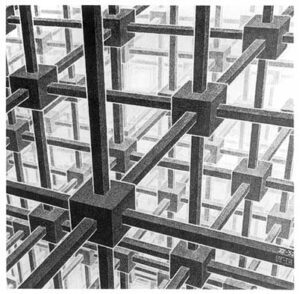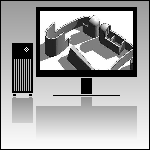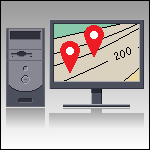Linked Data
 |
Database Trends
- Database compatibility continues to improve. Software that is ODBC (i.e. Open DataBase Connectivity) compliant, and uses OLE technology and the Microsoft Object model becomes ubiquitous.
- Public and private sector entities with access to very powerful computer resources will routinely use data mining techniques to identify potential customers and streamline their operations. Archived data will be used to spot consumer trends, tastes or preferences and refine marketing models so that ever smaller market segments can be effectively reached. Advanced pattern recognition capabilities coupled with readily accessible historical data (i.e. data warehousing) will be lead to improved customer service (or paranoia).
|
 |
CAFM Software
- CAFM software links CAD drawings to one or more databases that contain facilities related information. In the not so distant past, a great deal of labor was required to maintain a CAFM system once it was installed. The current crop of CAFM software however, is far easier to maintain. As a consequence, product sales are increasing. Clients have been quick to realize that building maintenance costs are likely to go down if they link CAD drawings to building data. More and more clients are beginning to require that CAD deliverables prepared by their consultants be configured so they are compatible with the client’s CAFM system. In the near future, an A&E firm’s survival is likely to depend, in part, on its ability to operate in a multi-standard CAD environment.
- In the next few years, maintenance personnel will come to rely on hand held sensing and diagnostic equipment more and more. Such equipment will probably be marketed with wireless phones to make remote telemetry a reality. Hand held devices will probably be issued to the facilities and maintenance staff as standard practice. Such hand held devices will contain the work ticket (i.e. job assignment), the manufacturer’s maintenance instructions as well a facilities maintenance rules and guidelines. The devices will be able to plug directly into equipment to check operational status or diagnose problems. Back home, these PDA’s will “synch up” with the network to feed data back to the various databases maintained by the facilities organization. This can also happen remotely via wireless cell phone technology. One can easily envision eBooks that contain Operations and Maintenance (O&M) manuals on flash memory or a removable hard disk. We can also expect to see O&M manuals on websites so they can be remotely viewable.
|
 |
GIS Software
GIS software is similar in concept to CAFM software but it has one significant difference. GIS software ties graphic and tabular data to a physical location. Indexing data to a physical location can be very useful to many people. With the advent of Global Positioning System (GPS) equipped cell phones and computers, the popularity of GIS software is likely to increase significantly.
|
(Previous Page)(Next Page)